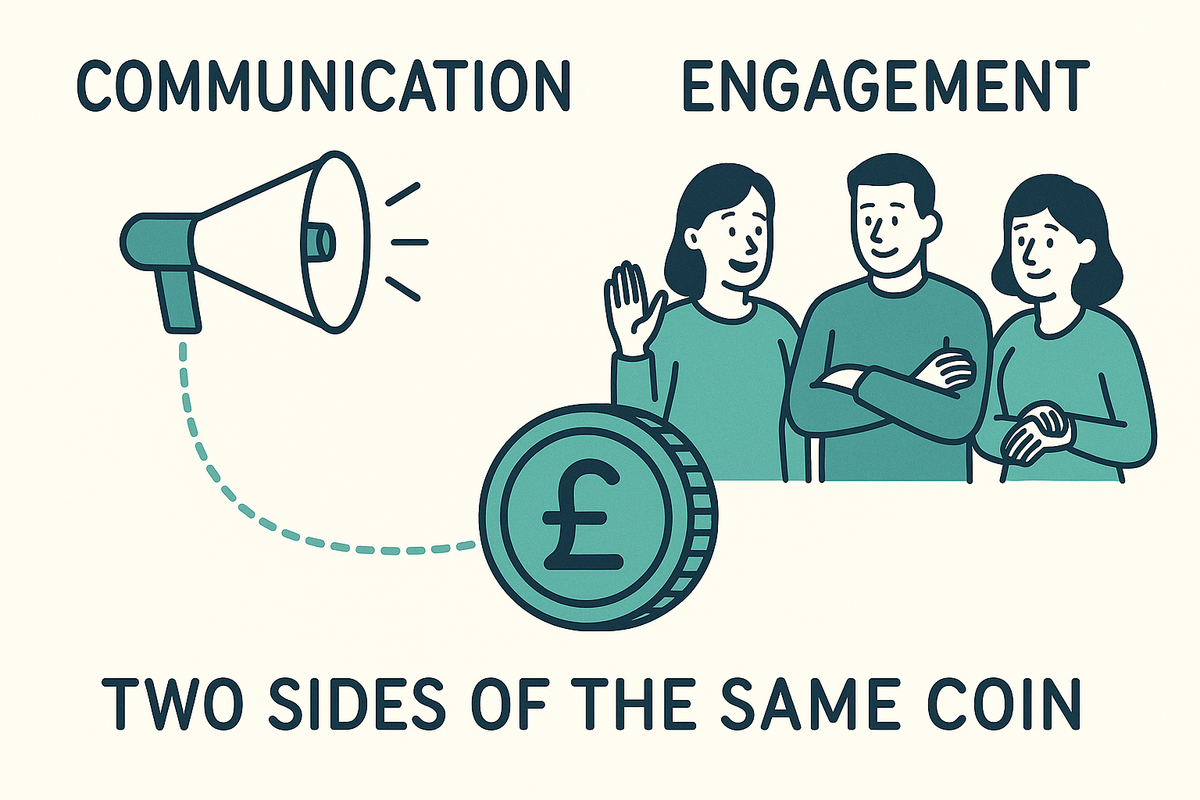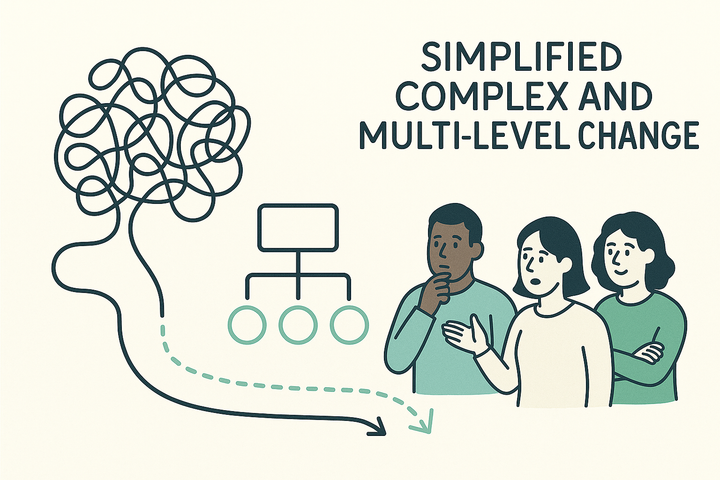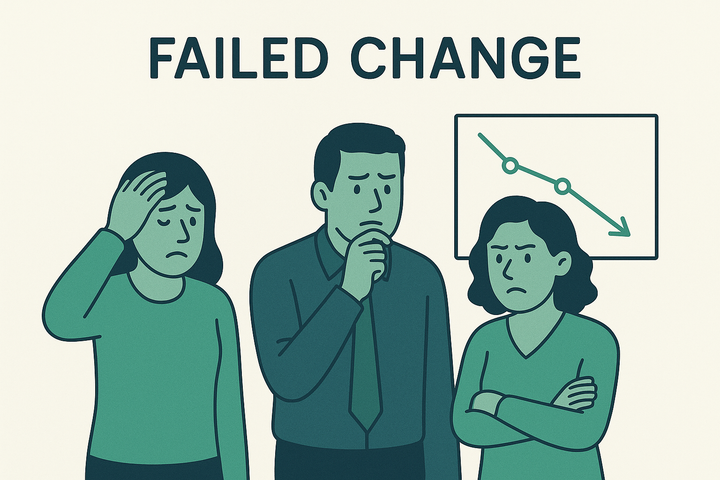Communications and Engagement Are Two Sides of the Same Coin – Don’t Split Them
Most organisations treat communication and engagement as separate disciplines. In change, that’s a mistake. This article explores why they need to be reconnected—and what happens when they are.

The false divide
In many organisations, change gets sliced up and handed out to different teams.
Communications writes the messages.
Engagement runs the workshops.
HR gets the pulse surveys.
Project management tracks progress.
It sounds neat, even efficient. But it creates a dangerous gap.
Because you can’t communicate change well without engaging people, and you can’t engage them meaningfully without clear, honest communication. They’re not separate functions. They’re different expressions of the same strategic intent.
Communications and engagement are two sides of the same coin. And when you split them, the change effort starts to crack.
How the split happens (and why it matters)
It usually starts with structure. Somewhere along the line, communications and engagement were peeled apart, often because they report to different senior leaders.
Problem 1: Different senior sponsors
Engagement is often housed within HR, seen as a “people” issue. Communications sits elsewhere, often under external affairs, strategy, or as a standalone team. The result? Engagement gets framed as soft. Communications as spin. And neither is treated as a strategic partner to the CEO.
This separation isn’t just operational. It’s cultural. And in times of change, it becomes expensive.
Problem 2: Different timelines
Communications gets briefed once decisions are made. Engagement is invited in later to manage resistance or sentiment. But neither is involved early enough to shape direction, language or tone.
Problem 3: Different mindsets
Communications aims for clarity, reach and alignment. Engagement aims for connection, response and participation. Both are needed. But handled separately, they often undercut each other.
Problem 4: Different measures of success
One team tracks clicks, reach and open rates. The other counts participants, survey returns and anecdotal feedback. But what really matters is whether people understand, believe and act. Neither set of metrics captures that fully.
What happens when you keep them apart
When communication and engagement operate on parallel tracks, things start to unravel:
- Messages feel disconnected from reality
- Listening exercises generate insights that never feed into messaging
- Leaders sound polished but distant
- Managers feel underprepared to deal with questions
- Employees stop trusting that anyone is really listening — or leading
The result? Glossy campaigns with low credibility. Big ambitions met with quiet resistance.
What happens when you bring them together
When communication and engagement operate on parallel tracks, things start to unravel:
- Messages feel disconnected from reality
- Listening exercises generate insights that never feed into messaging
- Leaders sound polished but distant
- Managers feel underprepared to deal with questions
- Employees stop trusting that anyone is really listening — or leading
The result? Glossy campaigns with low credibility. Big ambitions met with quiet resistance.
What it looks like in practice
Unifying communication and engagement transforms how change is experienced.
Leaders start telling a consistent story — not just reading a script, but owning the narrative. Staff feel involved in shaping the journey, not just watching it unfold.
Feedback loops become meaningful — not just box-ticking exercises but real-time insight that shapes the next step. And instead of generic broadcasts, you deliver messages that matter, at the moment they’re needed most.
Because at its best, communication isn’t just about clarity. And engagement isn’t just about participation.
Together, they build belief — the kind that moves people and change forward.
Final thought
If communication is what people hear, and engagement is what they do with it, then splitting them makes no sense.
In change, what matters most isn’t the volume of information or the number of touchpoints.
It’s whether people get it.
Whether they see themselves in it.
And whether they’re willing — and able — to move.
That only happens when communication and engagement work hand in hand, owned at the top, and aligned in purpose.
One coin. Two sides. One shot to get it right.
Not sure if your messages are connecting — or just going out?
Start with the Sound & Signal Review — our straight-talking diagnostic that shows what’s landing, what’s missing and what’s actually being heard.
Or, if your change programme is already in motion and energy is dropping, the Rapid Action Accelerator can help you reset the narrative, realign leaders and re-engage your teams — fast.



